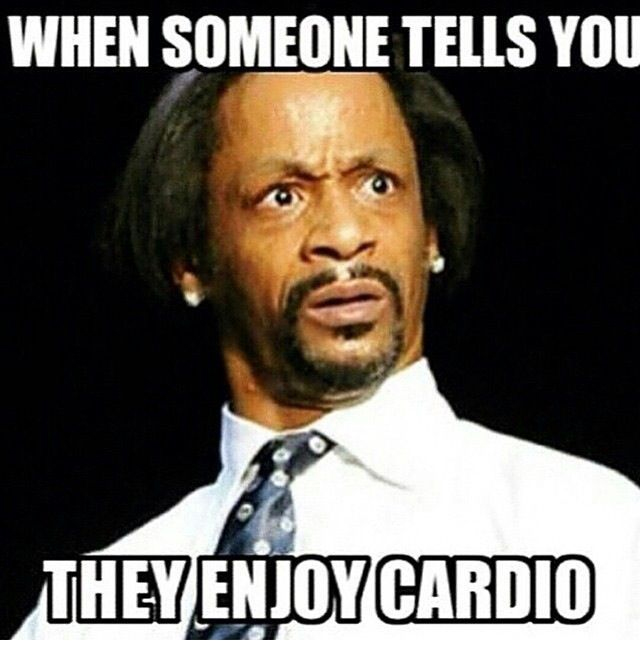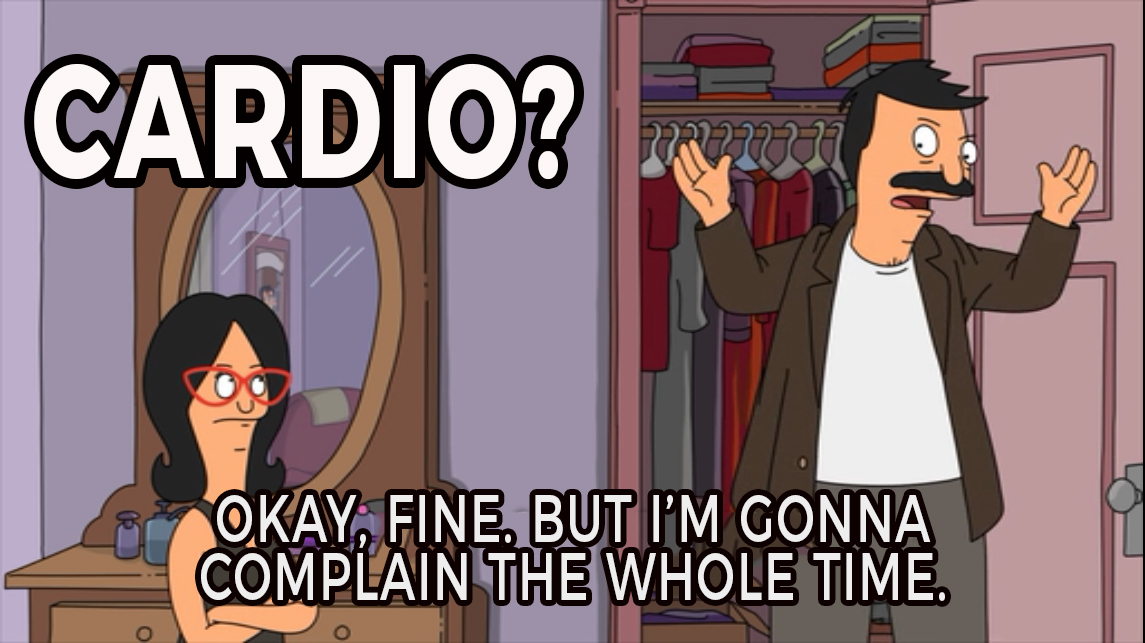UPDATE: Since writing this post, another study into the physiology of pole has been conducted. Yey progress! You can find a link to that study below and I’ll post more about it when I can! Nicholas, J.C. “The psychological, physiological, and injury-related characteristics of recreational pole dancing” (2019) (Unpublished doctoral dissertation), University of Western Australia
Arrrggg noooo, cardio! *Hides under pillow*.
I know, I know – cardio is as universally hated as comic sans.
It hurts, it’s sweaty, it’s frickin’ hard work and it’s a proven fact that time actually slows down as soon as your heart rate goes over 90 bpm.
But I bet you’d feel a little more enthusiastic about it if there was a way to cardio that could actually improve your performance on the pole, right? Well, I’m happy to say, my pole sisters and brothers, that there is such a thing as cardio for pole! Yey!
Read-on to find out why cardio is a necessary evil for pole dancers and how you can programme it into your training in the most pole-specific way.
Do you even cardio?
We talk a lot about strength training in pole—and rightly so, given that it is predominantly a strength based activity—but cardio training is important too!
Without boring you to tears with the science, what I’m about to tell you will make more sense if you first understand a little about the metabolic pathways that produce energy to power our muscles when we exercise.
There are 3 of these ‘energy systems’.
Energy system 1 – the ATP-CP system
When we need to produce rapid energy for a brief but very intense movement like a power spin, fonji or flip around the pole, we call on our ATP-CP system. This system provides the maximum power output possible, but it can only sustain this level of energy production for 10 to 12 seconds.
This is why it is virtually impossible to perform these kinds of movements continuously for more than 10 seconds or so. If you’ve ever tried to do this, you’ll notice your ability to produce power simply drops—it’s not possible to sustain these kind of maximal movements without some recovery time in-between.
Energy system 2 – the glycolytic system
The second energy system is the glycolytic system and this kicks in when we perform high intensity movements—like long, hard combos up the pole. Again, this system will only power our muscles for so long—between 12 seconds to about 2 minutes.
After 2 minutes, again, fatigue will start to set in and our body will need to switch to the final energy system in order to recover…
Energy system 3 – the aerobic system
The aerobic energy system comes into play for sustained low to moderate activity lasting longer than 2 minutes. In the context of pole, we’re usually using our aerobic energy system during floorwork.
| ATP-CP | 1-12 seconds | Explosive / max power | Power spins, Fonjis and flips |
| GLYCOLYTIC | 12 seconds – 2 minutes | High intensity | Intense combos up the pole |
| AEROBIC | 2 minutes to 2 hours | Low to moderate | Floorwork |
Throughout the 3 to 4 minutes of a pole routine, we will usually dip in and out of all three of these energy systems, using the ATP-CP and glycolytic for high intensity combos and power moves and the aerobic system to recover in between.
An interesting Italian research paper was released earlier this year which looked into the physiological demands of pole dance. Unfortunately, it was only a single case study (meaning there was only one participant in the study), but as of the date of writing (June 2017) it is the first scientific paper I’ve managed to find that investigates the physiology of pole dance.
>>If you wanna get your geek-on, you can find that research paper here. <<
The researchers monitored a pole dancer’s heart rate, blood pressure, blood lactate levels (and more!) as she performed a competitive 3 minute 30 second pole routine.
The results of the study show just how hard our heart, lungs and bodies need to work in a typical (national competitive level) pole routine.
Her average heart rate throughout the performance was 93% of its max and peaked at 96%. Her blood lactate levels were very high throughout and after the performance (higher than the levels usually recorded for competitive female gymnasts). Lactate is a by-product of the glycolytic energy system I mentioned above, so it seems that this was the predominant energy system being used by the dancer.
If you want to find out more about the science behind these 3 energy systems, there is a quick guide here.
So why am I waffling on about energy systems?
 Understanding which energy systems we use to perform a routine means that we can replicate these stresses in our training in order to improve how those energy systems function, and so improve our body’s ability to recover and tolerate the demands of that kind of training. In this way, we can make the training we do super-specific to pole.
Understanding which energy systems we use to perform a routine means that we can replicate these stresses in our training in order to improve how those energy systems function, and so improve our body’s ability to recover and tolerate the demands of that kind of training. In this way, we can make the training we do super-specific to pole.
Put simply: you get good at what you train.
Running at a steady pace on a treadmill for 60 minutes will utilise the aerobic energy system. Granted, if you are not very well conditioned then it will help to improve your aerobic base, but given the significant energy demands of pole, ultimately that kind of cardio training is not really going to improve your performance on the pole.
Instead, if you cut your cardio session to 4-minute bouts (the same length as a typical pole performance) and during those 4 minutes alternated between all-out max effort (eg medicine ball slams), high intensity intervals (eg fast pace rowing) and low intensity ‘recovery’ periods (eg steady pace rowing), can you see how that replicates the energy demands of a pole routine much more? This is how we can make our cardio training sport-specific!
Of course, if you want to make it super sport-specific, you could actually do those 4 minute bouts on the pole. The problem with this, though, is that pole is a skill-based sport and, let’s be honest, we’re all just a teensy-weensy bit obsessed with it, so we already spend a huge amount of our training time on the pole.
Replicating the conditions of a pole routine but OFF the pole means we can create the same physical adaptations we need to improve our pole performance, but without adding additional stress and risking overtraining/injury.
Because shoulders are a high-risk and already over-trained area for pole dancers, I might programme just 1 upper body based session like this a week, plus 2 sessions in the same format but using lower body exercises (eg simple athletic movements like speed skaters, sprints and high knee runs which will also help to improve speed and agility). Those sessions typically consist of a warm up, mobility work, then 1 to 3 sets of 4-minute bouts with recovery time in between each one, followed by cool down and stretch.
Of course, we are all different with our own unique training schedules, goals and capabilities. What works for one person won’t necessarily work for another but I hope this helps to get you thinking about how you can make your own cardio training a little more specific to pole.
Okay, cardio – it’s on!
If you’d like help programming your training in a way that is going to give you the best results on the pole, you’ll love my book – Strength and Conditioning for Pole – which is available now in hard copy or as a downloadable ebook! Yey!





